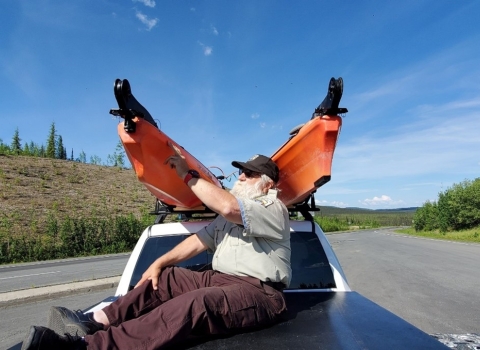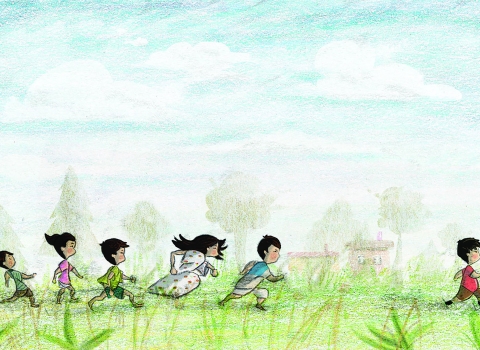People power conservation and this series is to shine a spotlight on some of the folks working hard to protect the nature of America. Patty Crandell is the Center Director at Abernathy Fish Technology Center in Longview, Washington. Patty has worked for the U.S. Fish and Wildlife Service for many years and shares her story with us.
Tell us a bit about yourself and your work.
I am Patricia Crandell — Patty — and I am the Center Director at Abernathy Fish Technology Center in Longview, Washington. Abernathy is a fascinating place for fish and people. It is one of only seven Fish Technology Centers operated by the US Fish & Wildlife Service in the Country. We are the research backbone of the Fisheries and Aquatic Conservation Program so we function as a laboratory and provide technical assistance. I oversee things here and have the privilege of working with some very smart people.
What kinds of work do the smart people of Abernathy do?
It depends on the day really, but it is all very detailed scientific work. We have three main research units: Conservation Genetics, Nutrition & Physiology, and Quantitative Ecology & Technology. So on any given day, our folks could be assessing the most nutritious food for salmon, teaming up with tribal partners to learn more about Pacific lamprey, using drones to help a refuge minimize the impact of invasive common carp, or reviewing genetic information about polar bears for a neighboring country. Everything we do at Abernathy — be it collaborating with partners or looking under a microscope at fin clips — is focused on conservation.
Wait, did you say polar bears?!
That’s right! While our focus is on aquatic species, we can help with technical assistance and analysis of all kinds of genetic material. Our state-of-the-art techniques and skilled geneticists allow us to quickly extract and analyze DNA in a given sample. This is particularly important when we need to make decisions about fish spawning or fish passage fish passage
Fish passage is the ability of fish or other aquatic species to move freely throughout their life to find food, reproduce, and complete their natural migration cycles. Millions of barriers to fish passage across the country are fragmenting habitat and leading to species declines. The U.S. Fish and Wildlife Service's National Fish Passage Program is working to reconnect watersheds to benefit both wildlife and people.
Learn more about fish passage . A tiny sample of a fin clip from a fish can tell us, for instance, if it is a brook trout or a bull trout and precisely which waterway it makes the most sense for a fish to return to and reproduce.
Wow! That is some pretty detailed micro-level data. What other cool science does Abernathy do?
I think everything we do is pretty neat but a short list of our scientific work includes: Examining the physiological responses of fish to environmental changes, evaluating the vulnerability of National Fish Hatcheries to environmental change, developing diets and aquaculture methods to help with recovery and improving water quality.
You must be pretty proud to be the Center Director of such a cutting-edge facility. Is this where you thought you would be when you started your conservation career?
Hah! No, not at all. Although fish have been a part of my life since I was smaller than a salmon myself (see above photo), my love of aquaculture came out of the idea of conserving fish to save humans. Specifically, I believed in — and still do — the power of fish to feed hungry people all over the world. Fish are incredible for their nutritional, cultural, and ecological value. I have always lived in a place where fish are integral to the way of life. I have also always seemed to gravitate towards jobs that involve math. My current role, lucky for me, combines both of those loves — fish and numbers — but it took quite a few detours to get here.
What was the journey like that got you to your current conservation career?
I’ve had a passion for aquaculture since my first childhood fish tank. My dad was an avid fly fisherman and an oceanographer. He taught at Humboldt State and a love of fish must be in our genes! I just really enjoyed everything about fish — watching them, being in the environment with them, eating them. When I went to college, I became very interested in a new field called Aquaculture. The focus at that time was the possibility of the production of fish to feed hungry people around the world. With my Ph.D in Genetics specializing in quantitative genetics, I moved to Alaska and worked for the University of Alaska. Later I worked for NOAA Fisheries as a statistician. My statistician skills also took me on a detour to the Alaska State Department of Corrections where I honed my skills as a supervisor. Altogether, I was able to put both my love of numbers and my love of fish into my role as a Deputy then Center Director at Abernathy where I have been ever since.
What do you think is the most important thing you have learned on your career path?
Even though my original passion was for producing fish to save humans, my current career and the journey to get here has shown me how this relationship can go both ways. Humans can save fish and fish can save humans. We are connected. Fish have the power to feed hungry people, of course, but I also believe that we need to keep our natural resources intact. A conservation mindset has helped me see the way water connects us all. From the way mussels filter out contaminants in streams to the nutrients that fish provide to the ecosystem as a whole, the health of people is linked to the health of fish.





